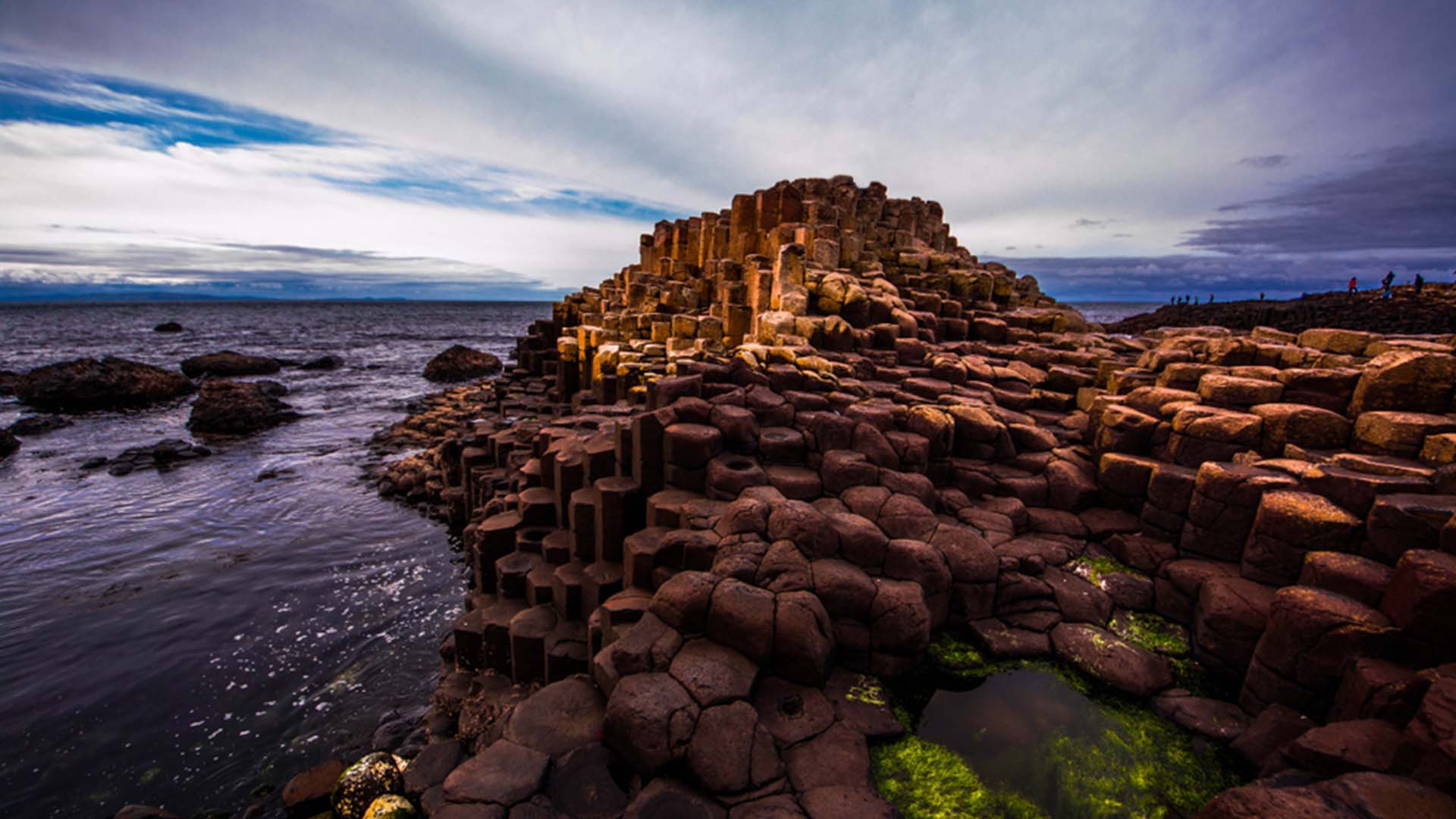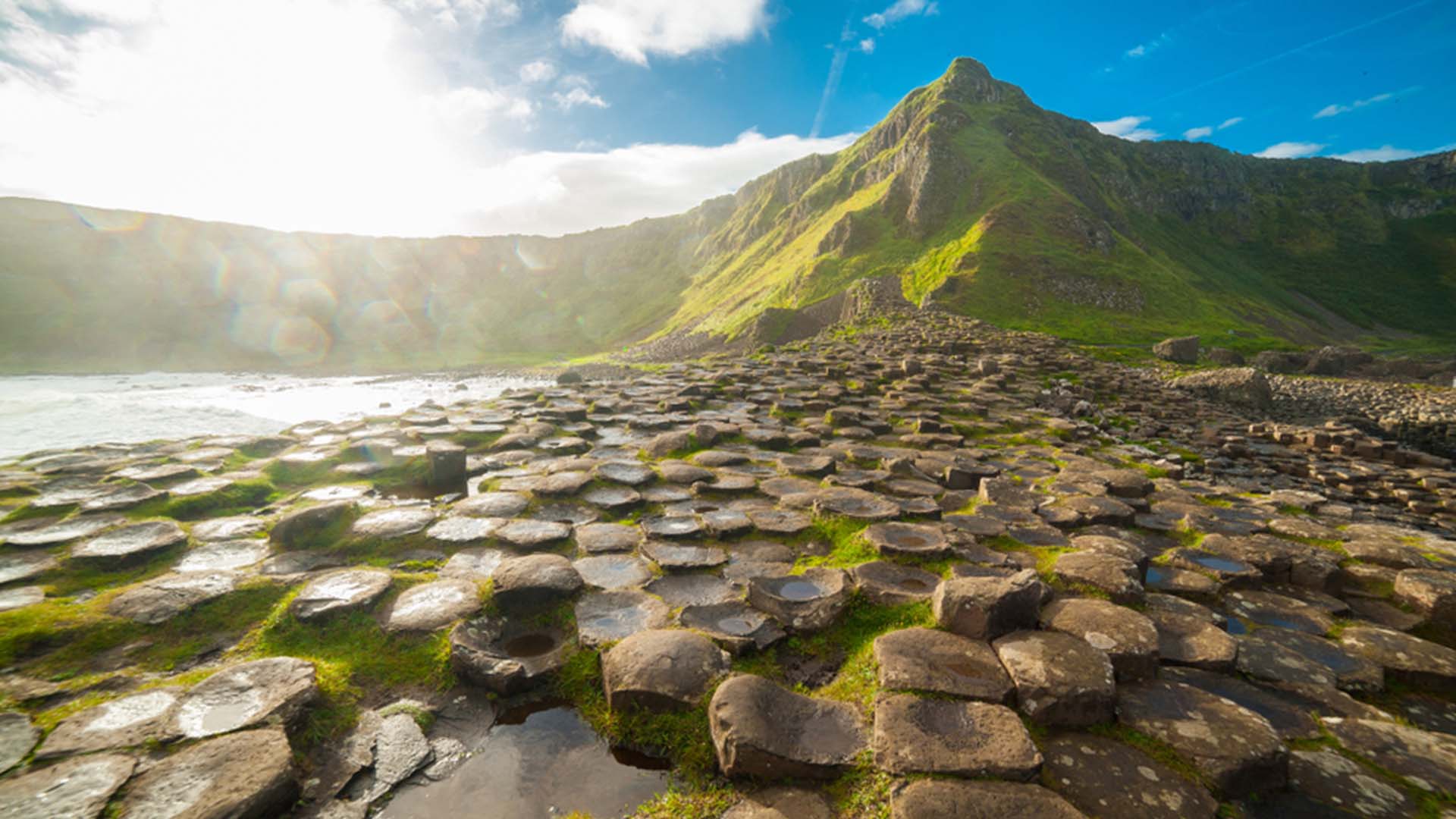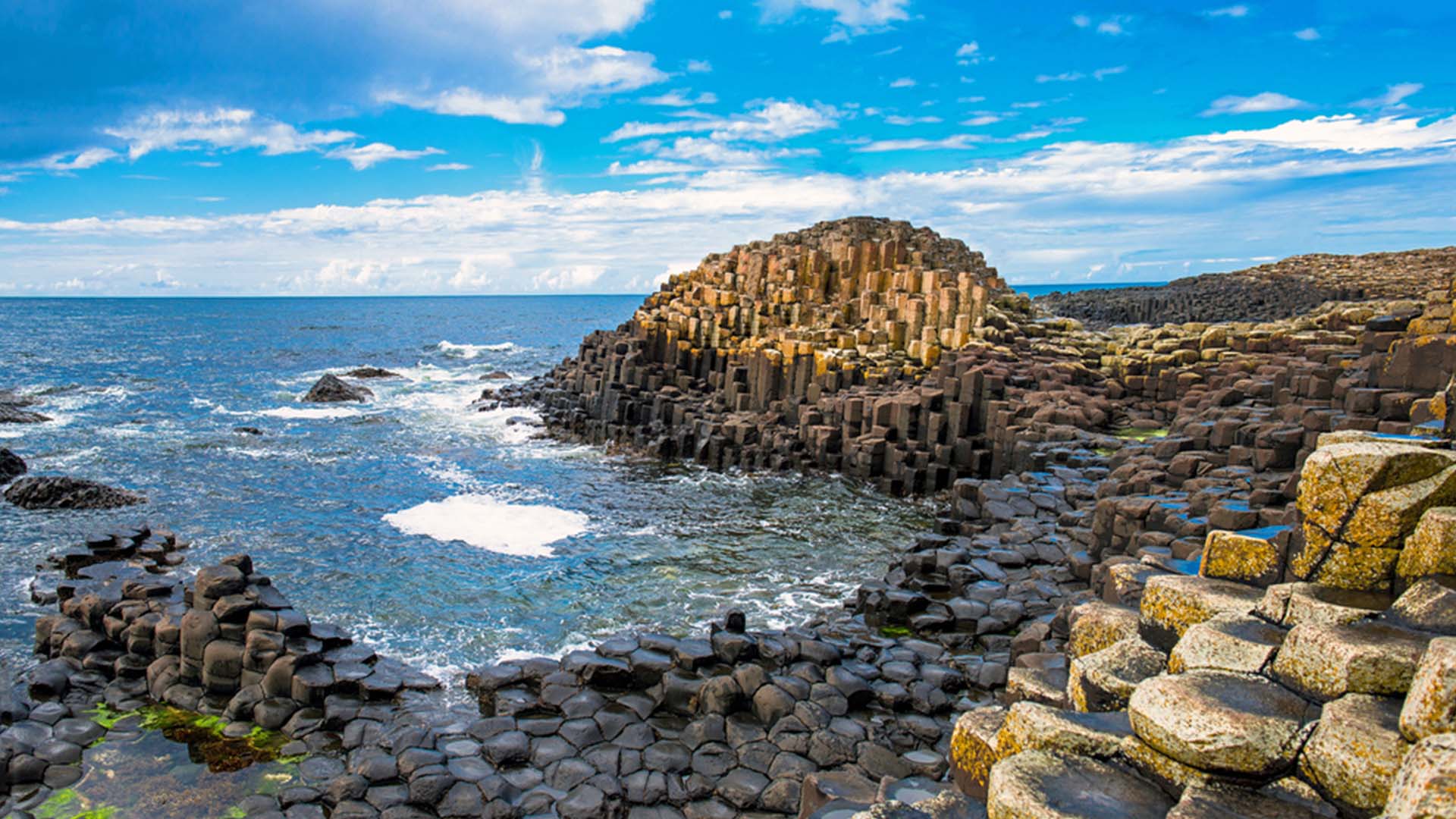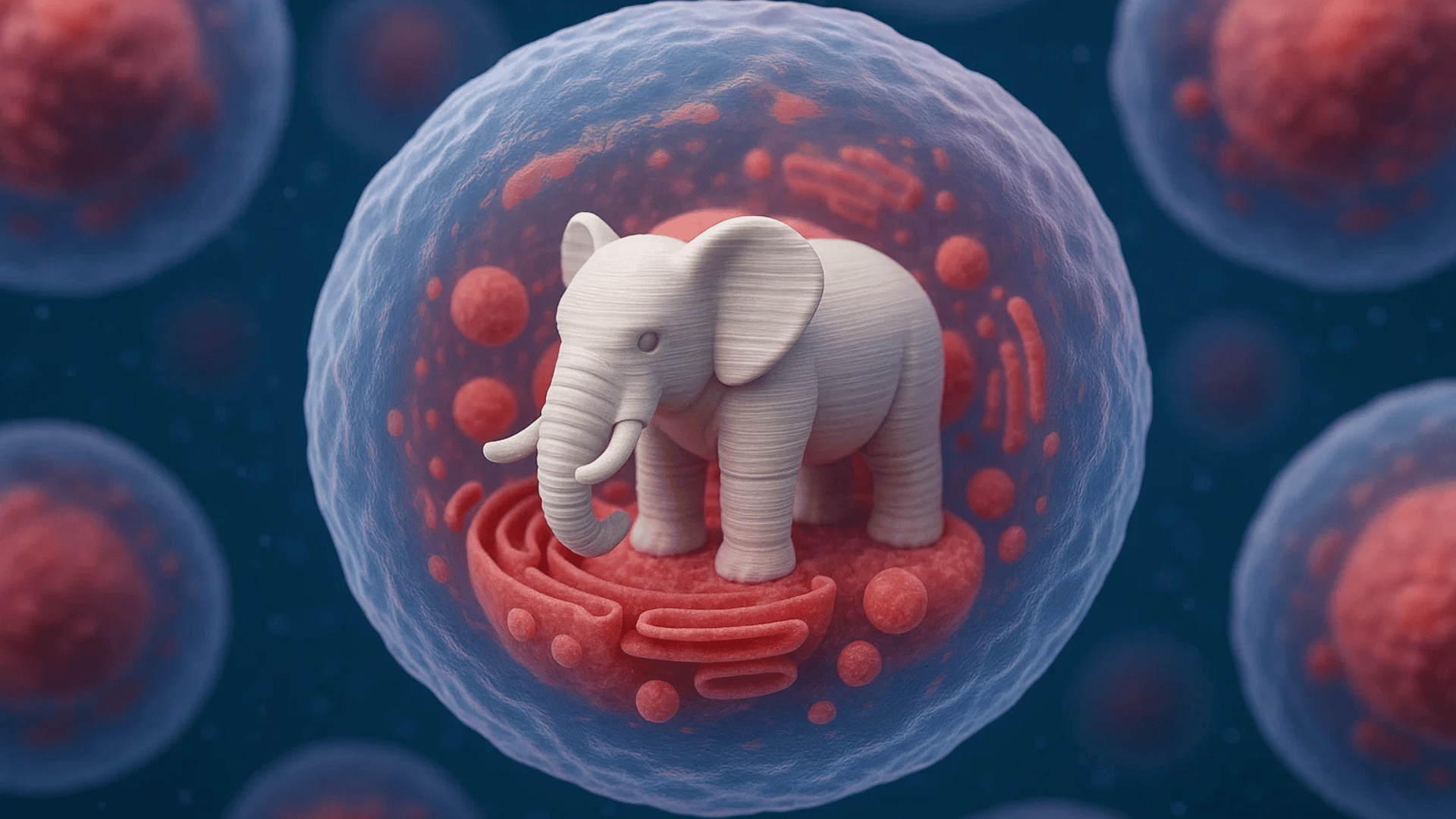The Giant’s Causeway is famous for its basalt columns that have the appearance of stone steps leading into the sea. There are roughly 40,000 of these stones on this site, cascading down from the cliffside into the North Atlantic Ocean. For years after its discovery, people debated whether these giant stone steps were man-made, naturally occurring, or even the work of giants. Take a look at the facts versus the legend behind this Northern Ireland treasure.

The Science: Lava Flow
Clochán an Aifir (Giant’s Causeway) was formed roughly 50 to 60 million years ago during the Paleogene Period. Its creation was the result of successive flows of lava inching slowly toward the coast and then cooling when they reached the sea. The layers of basalt formed columns and the pressure between the columns caused them to be sculpted into polygonal shapes. They are spread out along the cliffs up to 330 feet in elevation and the individual shapes measure up to 82 feet in height. The volcano that originally created these formations, however, can no longer be seen today.

The Legend: Fighting Giants
Although we now know the scientific explanation behind this natural wonder, the myth is much more fun. As the legend says, Northern Ireland was once home to a giant named Finn McCool (or Fionn Mac Cumhaill. When Benandonner (another giant from the Scottish Island, Staffa) threatened Ireland, Finn decided to retaliate. He tore apart chunks from the Atrim coastline and hurled them into the sea, creating a bridge whereby he could make his way to Scotland and fight Benandonner.
But once he arrived in Scotland, Finn realized that Benandonner was a much larger giant than him and would likely win in a fight. He then retreated to Ireland where his wife came up with a plan that involved disguising Finn as a baby. Upon finding Finn dressed as a baby, Benandonner rationalizes that if a baby is this big then the father must be much larger than himself. He hastily retreats, tearing away as much of the Causeway bridge as possible until all that remains are the stones left there today.
As fantastical as it all sounds, would you believe us if we said there are remnants of the same basalt columns at Fingal’s Cave in Staffa?

Giant’s Causeway Facts
Not only does the area contain beautiful cliffs, marshes, seashores, and grasslands, but it’s also home to 50 species of birds and more than 200 species of plants. Some of the birds in the area include the cormorant, fulmar, redshank, and eider. There are also the stromatolite colonies, these are particularly rare birds that are only found around warm waters with high saline content. The site is also full of a series of rare plants including hare’s foot trefoil, spleenwort, vernal squill, frog orchid, and sea fescue.
Not only is the area populated with roughly 300,000 tourists annually, but it’s also an excellent spot to capture some beautiful photos. Most famously, a photo of this natural wonder was used as the cover of Led Zepplin’s award-winning Houses of the Holy album.







